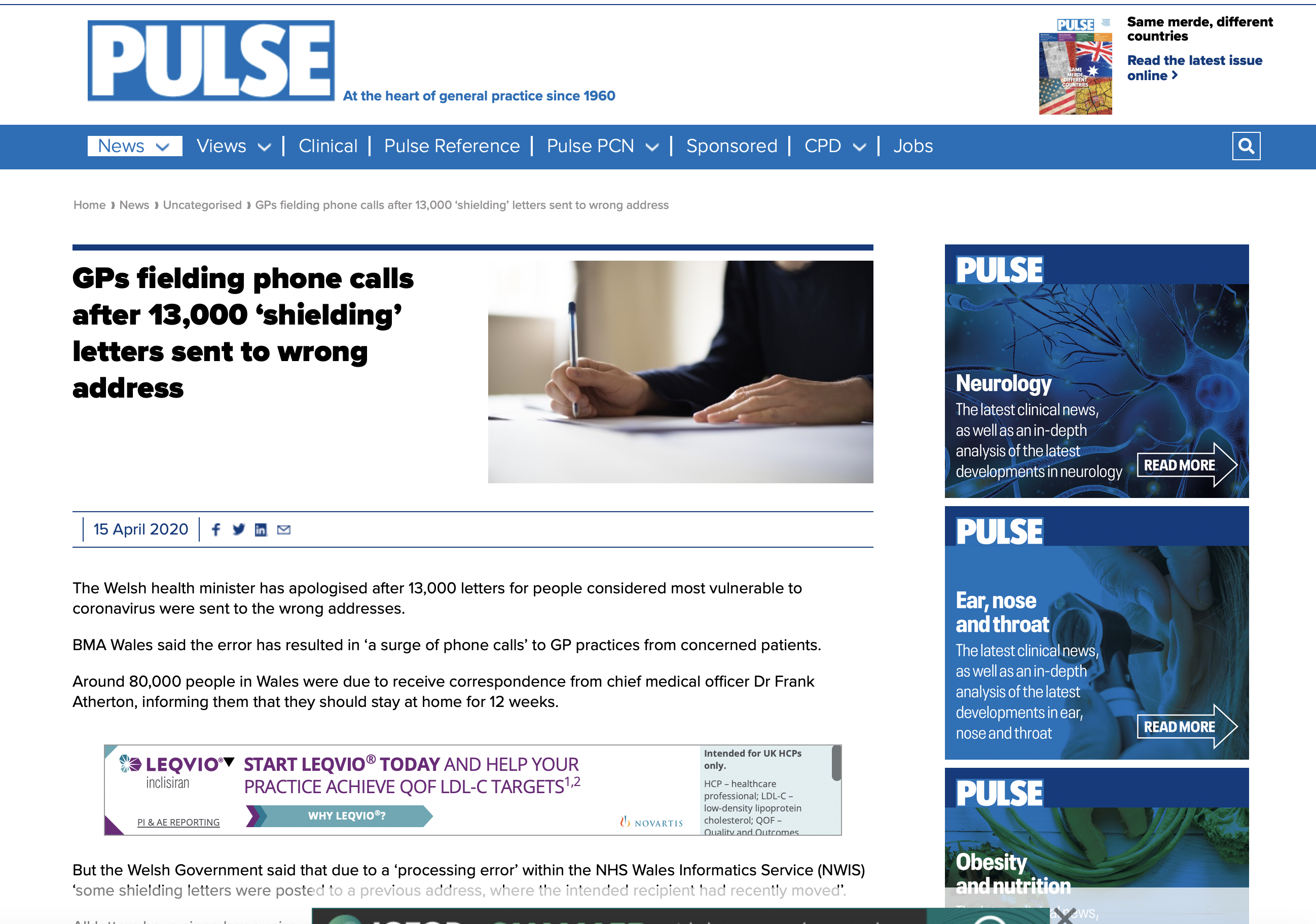NHS data: we have a problem
If you’re in clinical informatics, you can learn a lot from the COVID-19 pandemic.
When we needed to send out shielding letters to our patients with motor neurone disease, I ran a report against our neurology electronic patient record, obtaining the names and addresses of all of our patients with motor neurone disease in South Wales. In generating that report, each patient’s vital status was automatically checked with multiple authoritative sources of information, to ensure correct address information and to ensure we would not send a letter to a patient who was deceased.
This was straightforward because a) we had coded diagnostic information and b) we had a sensible and flexible information architecture that minimised manual effort. It took me about 10 minutes.
When we needed to send out shielding letters to patients with multiple sclerosis but only those on certain categories of disease modifying drugs, then I ran a report against our neurology electronic patient record as above, but simply added a cross-reference to the active medications we had recorded.
This was also straightforward because a) we had already coded both diagnostic and treatment information for our entire cohort, and b) we had a sensible and flexible information architecture.
For both, the use of standards such as SNOMED CT and dm+d was critical in creating meaningful data that could be used for a variety of purposes, such as direct care, service management, and research.
When patients receive botulinum toxin in our clinics, we record using our electronic patient record. A document is sent into multiple portals and the structured information behind that document is stored, so that we know exactly what brand, dose and even where has been injected, all using SNOMED CT.
The document is useful, but the document is simply a side-effect of the data.
So what about NHS Wales?
But in the wider NHS Wales, there were significant data problems, not least errors in getting the correct address for patients.

And our national ‘portal’, the ‘Welsh Clinical Portal’ is little more than a document and results archive. Many aspects are good, such as being able to see letters and laboratory and radiology results from across Wales, but we should have much greater ambitions. This is software that has been in development for many years and yet is a long way from being an electronic patient record.
It’s time for a reset.
NHS Wales needs to become data-driven.
We need to be able to focus our limited resources and manage the backlog of patients waiting by the sensible and considered use of clinical data in order to prioritise, minimise harm and improve outcomes. We need greater user-centred design, and clinical leadership, not ‘engagement’ as the last part of a development process in which the first time we see a new design it is about to be launched.
The Welsh Audit Office (WAO) highlighted a “lack of independent scrutiny” and “unbalanced reporting of progress”. We as an informatics community should be much more open and transparent on the challenges we face, and turn our expertise to meeting those challenges.
Mark